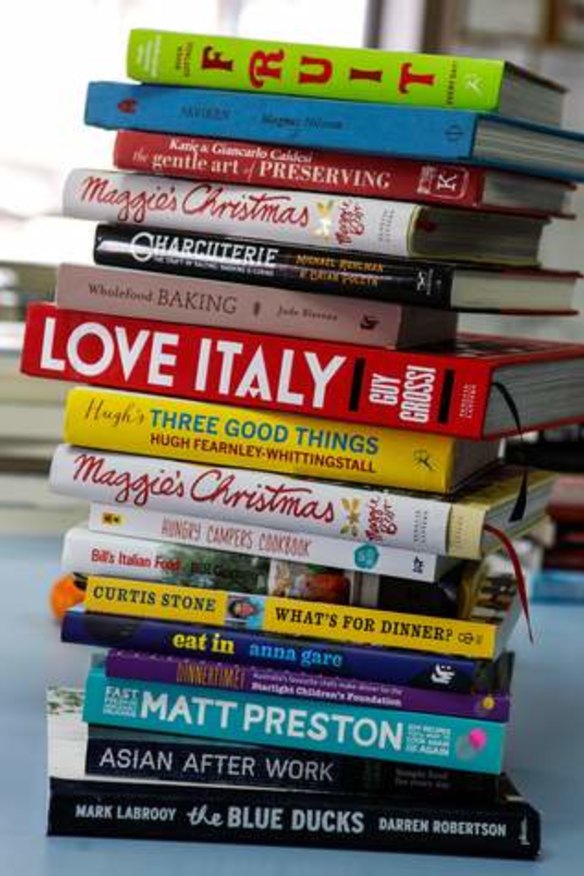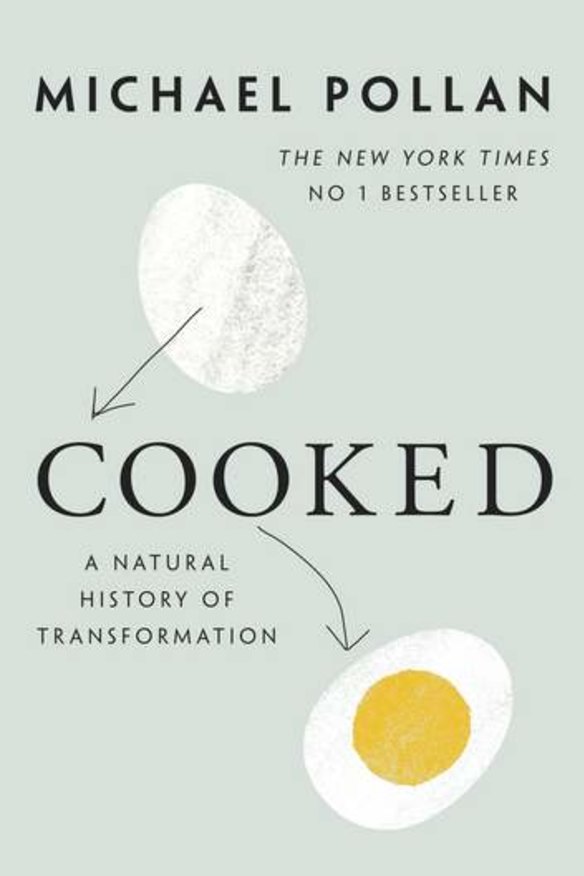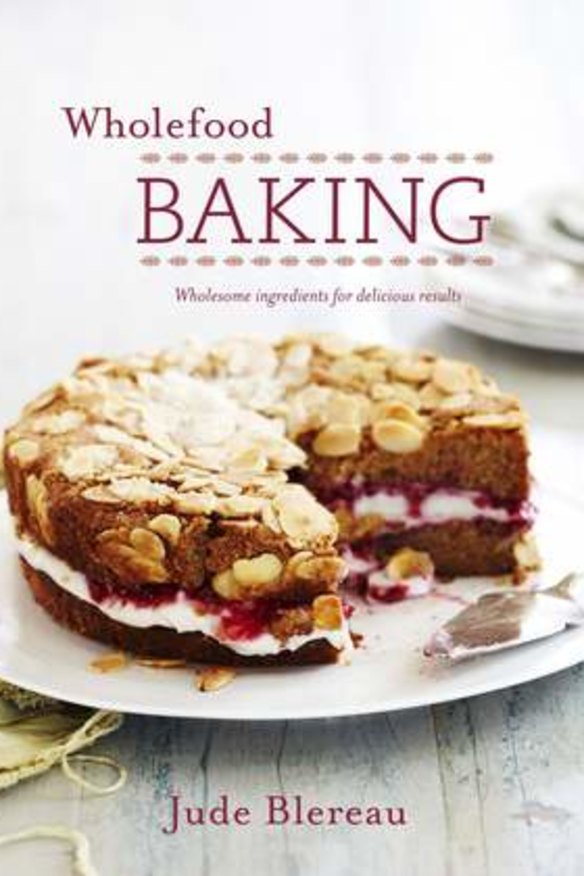Must-have cookbooks of 2013
<b>Kirsten Lawson</b> gives us the list of must-have cookbooks of 2013.

Faviken
Magnus Nilsson (Phaidon, $65)
Cheffy books are ubiquitous and seemingly more about cementing a place on the world stage and laying out their approach to a food-hungry public than meant as actual cookbooks. These books have their place and can make fascinating and insightful reading. But Faviken captured our imagination in a much more visceral way - so much so that this tiny, isolated restaurant in a remote hunting estate in northern Sweden tops the list of overseas places we want to eat.

One of Magnus Nilsson's much-talked-about dishes featured in this book is warm beef marrow and raw heart, the bone sawn open in front of diners on an old chopping block to release the smell of ''burning fat, drying beef, and bone pulverising under the serrated blade'', as he writes. Nilsson grew up hunting and the way he deals with meat - and all the food he finds and stores so obsessively - is astonishing. He uses old dairy cows, choosing his cows well before slaughter, and after slaughter, dry-ageing the meat for up to 270 days.
Nilsson plucks emotional strings also with extra-young food, starting the meal with a cheese ''just five or six minutes old … seasoned with one petal of lavender picked this summer'', and serves fish with ''a leaf of kale steamed so briefly that it is dying on the plate in front of you''. He serves cow's colostrum as a custard.
He serves game meats hunted locally and wild foods foraged from the forest. He matures vinegar in a tree stump hollowed out with a chainsaw and toasted with wood smoke. He ferments mushrooms and grains and makes his own liqueurs.

Reading this book gives you that same overwhelming feeling of eating in a great restaurant. Sure, it's only food, but if you're the kind of person who gets emotional about food, you can feel you're in touch here with something deeply real, with death, rot and new birth.
Wholefood Baking
Jude Blereau (Murdoch Books, $45)
Jude Blereau is Australia's guru of wholefoods cooking, always with the message that food should be as close to its natural state as possible. She has pushed the virtues of good fat in previous books and this year, she turned her hand to baking, in her determined stance against the faddism of modern diets.
''When it starts to get obsessional and fanatical, that should be a red flag,'' she says. ''I have had students that have made a beautiful muffin with wholemeal wheat flour, a little bit of white unbleached wheat flour, rapadura sugar, fruit in the muffin and it's been sent home from school.''
Sweet does not necessarily equal bad, she insists. There's a place for cakes and other baking in our diets, but not the baked stuff you buy; you should be baking at home and swapping the refined flours and sugars for much healthier alternative. Her book shows you how. She suggests the sugars and flours you should be using and urges caution with gluten-free baking flours, which are often mixes of highly refined starches such as potato, rice, tapioca and cornflour.
She has recipes such as maple syrup, pear and ginger muffins; or cinnamon apple pie with oat and barley shortcrust; or coconut and palm sugar cake. Blereau lives in Perth, where she leads wholefoods cooking classes.
Cooked: A Natural History of Transformation
Michael Pollan (Allen Lane, an imprint of Penguin, $30)
Preserving is the topic du jour, with no shortage of books this year covering this vast and mysterious topic, bringing preserves, cured meats and fermented foods back into consciousness just as the skills were set to be forgotten. We have three in our favourites list. Pollan's book is not so much a cookbook as an account of his re-education in the kitchen after years as a polemical food writer. He writes about his four revelations: barbecue, slow-cooking, bread-making and fermenting.
Pollan says cooking was always part of his life but his interest was only ''mild'' until he set about three years of learning the fundamental skills. Now, he appears to view cooking as being at the heart of everything that makes us human and makes society function. Cooking transforms us from consumers to producers. It increases freedom and self-reliance, he says (such catchcry words for Americans), and reduces our dependence on corporations. Is there anything less selfish and less alienated, is any time less wasted, he asks.
Pollan's mission is to get people back in the kitchen cooking - not heating pizza or opening a can, but cooking in the way our grandparents would have meant it. His book is not a cookbook, but it covers the four fundamentals of cooking in detail, and for those ready to hear the message, his book will be not only inspiring but also instructive.
The Gentle Art of Preserving
Katie and Giancarlo Caldesi (Simon and Schuster, $40)
Katie and Giancarlo Caldesi, who have two restaurants and a cooking school in Britain, offer a detailed, accessible guide to preserving that answers all those troubling questions of food safety. You'll find plenty of books telling you how to make your own bacon, age your own prosciutto or bottle autumn produce, but few have the practical detail this book offers.
It's comprehensive, covering vinegar-based preserves like chutney, smoking and salting food to preserve it, fermenting, salt cures, preserving in oil and alcohol, using sugar, and drying foods. The Caldesis explain the four spoilers - enzymes, moulds and yeasts and bacteria - and how to deal with them. You want some of them, of course, to ferment and age your food; others you do not. This book also addresses the question of curing salt, acid levels on vegetables and the like. It's not highly technical, just very useful, and there are loads of recipes.
Charcuterie: The Craft of Salting, Smoking and Curing
Michael Ruhlman and Brian Polcyn (Norton, $42.95)
Charcuterie is more sciency and cheffy than the Caldesis' book, a book that leaves no detail unsaid, assuming if you're going to enter this world, you'll want to know the fine detail, to the cuts of a pig (in handy diagrams) and the science behind curing methods. Written by Rulhman, who co-authored The French Laundry Cookbook, and chef and professor of charcuterie Brian Polcyn, this is an updated version of a book published in 2005.
For Ruhlman, it began with the discovery of duck confit, which brought on ''a powerful mania'' and an obsession with exploring ways to confit meat, a technique that turns even lean and flavourless modern pork into ''something so tasty you'd swear voodoo was involved''. For Polcyn, it goes back to his Polish grandmother, who made unparalleled kielbasa, a smoked sausage, with her unconventional method of smoking it overnight in front of the fire then leaving it at night under the bed.
This book has recipes for sauces and relishes you need with meat, how to make your own salt cod (salted and wrapped in cheesecloth, then cleaned and left another four to seven days, basically), and how to preserve and ferment and smoke things other than meat (preserved lemons, sauerkraut, smoked almonds). It has a chapter on those ''individualistic, idiosyncratic, and temperamental dry-cured meats'' - salami, air-dried ham, bresaola, coppa and the like, ''the quintessence of the charcutier's art'' and the most difficult for the way they rely so heavily on atmospheric conditions and humidity.
The pig reigns supreme here, because whereas each part of a cow tastes similar, not so for pig. ''Its liver is superior in pates. Its belly is fantastic, especially salted and smoked - pork takes on the flavour of smoke like nothing else - the preparation we call bacon. The belly is best of all, in my opinion, when it's salted, then confited. Pig's feet are loaded with gelatin, which enriches stocks and produces aspic, and the meat from the feet and shanks is otherworldly when braised and seasoned. Even the skin, if cooked long and slow, becomes succulent and delicious.''
To a significant extent, this is a book for the true believers, the serious cooks with a cellar to hang their curing meats. But it's also a book for people who wanted to make the most simple of preparations - rillettes and cured fish, pate and terrine, with comprehensive and very well explained recipes.
Maggie's Christmas
Maggie Beer (Lantern, an imprint of Penguin, $50)
Maggie Beer's Christmas is a charmer, full of the energy and gorgeous luxury that accompanies this well-known face of Australian cooking. You might not imagine a book called Christmas would be useful on the shelves for most of the year, but the theme works well here, and is far more wide-ranging than cooking on Christmas Day.
Beer has menus for relaxed entertaining, substantial party food, food for a beach holiday and a New Year's Eve dinner, most of them recipes that you'll go to year round. With drinks, we're taken with recipes for bocconcini balls, rolled in dukkah and baked till melty inside; soft-boiled eggs on toast with a salsa of raisins, capers and basil; and her buttered walnuts with rosemary (simply very fresh walnuts tossed in hot butter and olive oil with rosemary).
As for Christmas Day itself, her table is a glamorous affair - yabby and nectarine salad, figs with burrata, lobster sashimi with rock melon, and more equally excellent salads. At the centre, she suggests roast goose with marmalade and cumquat stuffing; turkey with prune stuffing; or pork loin with grapes and verjuice.
Beer has always been a source of great desserts and among good-sounding options in this book are chestnut and chocolate pots with pineapple; and a tart that we'll be cooking over the break with a filling of ground almonds and dehydrated cumquats (Beer helpfully tells you where to buy such things), topped with a chocolate ganache.
Also on our to-do list is her walnut bread, which you can serve with blue cheese and honeycomb (she suggests for New Year's Eve dinner), and a walnut flatbread to have with dips or caramelised onions and goat's cheese. This is a lovely book, with such a passion for beautiful ingredients and elegant preparations but none of it heavy on technique or fussy presentation, and all of it firmly aimed at family celebrations.
River Cottage Fruit Everyday
Hugh Fearnley-Whittingstall (Bloomsbury, $50)
This isn't a groundbreaking book but it's one full of the Fearnley-Whittingstall enthusiasm for championing a cause - in this case, fruit - in his highly likeable way. As the title suggests, it's an entire book devoted to fruit recipes, but that doesn't mean simply desserts - Fearnley-Whittingstall has appealing recipes for fruit chutneys and sauces for meat, fruit in savoury salads, in drinks, even on pizza (and not just pear - quince, apple, beetroot and strawberries get a look in as well).
Fearnley-Whittingstall wants to tackle what he calls the ''lingering fruit apathy'' symbolised by the fruit bowl used for decoration rather than food, and mostly his recipes seem to make sense. He has tips for where to buy (or find) fruit and what to look for, and intriguing factoids like the information that 95 per cent of blackcurrants in Britain are used for ''a certain well-known blackcurrant drink''. Fearnley-Whittingstall has his own blackcurrant drink in this book, only his is alcoholic - blackcurrants, beaujolais, vodka and sugar. And he has a gorgeous-coloured rosehip syrup (just rosehips and sugar), lemonade (likewise, just the fruit and sugar), plus sloe or damson vodka.
He uses our favourite - gooseberries - in a bunch of recipes, from cucumber and gooseberry soup, to ketchup, relish (to serve with rabbit rillettes), salsa (with barbecued mackerel), in focaccia with sage, and in a cobbler with elderflower and almonds. Another favourite, rhubarb (yes although not a fruit) finds a home in everything from roast goose with rhubarb stuffing, raw rhubarb and carrot salad, lamb and rhubarb pasty, and rhubarb and ginger cheesecake among a bunch of desserts. And why not? We like this guy and all he stands for.
Love Italy
Guy Grossi (Lantern, an imprint of Penguin, $100)
There are more than enough good-looking books from food writers, enthusiasts or chefs who head to Europe to discover a regional cuisine, but the thing that sets apart Guy Grossi's book about his Italian homeland is the recipes. The recipes are selective, sensibly chosen and gorgeous.
Love Italy is based on Grossi's travels around Italy, from Piedmont to Sicily, where he stayed in agriturismi - the farm-stays with a focus on food - and learned from the locals. It shows a predilection for the rustic and for simple cooking, presumably influenced by the farmhouse cooking, and you'll find familiar Italian dishes in here - arancini, risotto, salted croquettes, olive-oil cake and the like. But many of the recipes have an elegant touch, not in the sense of fussy or complex, but an element of the extraordinary, a sense of the delicious, as you might expect from such an accomplished chef as Grossi. Like the blood sausage he discovers in Piedmont, which includes sultanas and pinenuts. Or jugged hare made with a litre of red wine, a cup of port, and a little brandy and cocoa powder.
There's an emphasis on cured meats - he has a recipe for salami, and rustic preparations such as confit goose, and duck-liver pate, potted meat and pig's head terrine. We have his ''crumbled cake'' on our to-do list - it's a delicious-sounding cake made with equal amounts of almonds, polenta, flour, sugar and butter, with an egg, lemon zest, vanilla extract and grappa. Along with a comfort dish of buckwheat pasta baked with potato, cabbage, cheese and herbs.
Grossi says working on the book has put him ''more in touch with the food of Italy than ever before''. You might equally feel that way after reading his book.
Stefano Manfredi's Italian Food
Stefano Manfredi (Fairfax Books, an imprint of Allen and Unwin, $60)
Stefano Manfredi's book doesn't feel greatly user-friendly, mainly because of the lack of photos, which are standard issue with modern cookbooks and make them so much easier to use. Manfredi's book is Silver Spoon style, almost austere in its simple presentation. But we've got it on our favourites list because of the style of food highlighted here. This is peasant Italy at its most appealing: highly cookable and very simple.
If you want a deeper understanding of the Italian regions, you'll find it here with a detailed introduction by co-author John Newton, including a primer on the major Italian wines, and a summary of where Italian food is at today, with informative stats, such as the news that Italy has one-third the number of McDonald's outlets of Britain, France and Germany. Introductions to each region outline not only key dishes, but agriculture, cultural influences, and wine. With this on your shelf, you're well geared up to talk Italian food should the need arise. Newton had us on side from the get-go with an essay on olive oil in which he rejects the idea, ubiquitous among chefs and cookbooks everywhere, that olive oil loses its benefits when used at high temperatures. Nothing could be further from the truth, he insists, with olive oil standing up well to high frying temperatures, including deep-frying, and neutral oil unknown in Italian cooking.
There's plenty to keep you thinking in the kitchen, and nothing hard to cook. From Umbria, he offers focaccia bread stuffed with blanched and squeezed beetroot leaves and anchovies. From Trentino, a tart made with no pastry - simply the lovely coarse polenta and almonds, tied together with butter and an egg, plus sugar. A flour-free pistachio cake spiced with grappa from Sicily. A sardine ''flan'' from Puglia - no pastry, again, just layered sardine fillets with breadcrumbs, cheese, fresh herbs and cheese and baked with eggs. Those braised spring vegetable dishes that you find in Rome that treat vegetables as though they were supposed to be cooked and melded together, not all crunch and severity. Beef cheeks braised in barolo with pea puree, from Piedmont. Feels like poetry.
